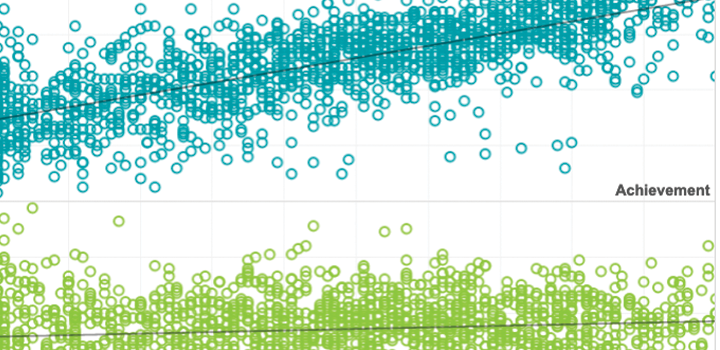Technical brief
Comparability analysis of remote and in-person MAP Growth testing in fall 2020
November 2020
By: Megan Kuhfeld, Karyn Lewis, Patrick Meyer, Beth Tarasawa

Description
This study compared the psychometric characteristics and indicators of test quality of fall 2020 MAP Growth tests administered remotely and in-person. Using test scores from over 535,000 K-8 students in 147 school districts (92 operating fully remotely this fall, 55 offering in-person instruction to all students), this study provides insight into the comparability of remote versus in-school assessment. We found high levels of marginal reliability and test engagement across all grades, as well as consistent trends in test scores for remote and in-person tests for students in grades 3-8. Taken together, these findings increase confidence in the quality of data gathered from remotely administered MAP Growth assessments in grades 3 and up.
See MoreAssociated Research

Technical brief
Related Topics



An investigation of examinee test-taking effort on a large-scale assessment
Most previous research involving the study of response times has been conducted using locally developed instruments. The purpose of the current study was to examine the amount of rapid-guessing behavior within a commercially available, low-stakes instrument.
By: Steven Wise, J. Carl Setzer, Jill R. van den Heuvel, Guangming Ling
Topics: Measurement & scaling, School & test engagement, Student growth & accountability policies


These studies are conducted based on assumptions under regular conditions for fixed test forms, such as no missing responses and normal distribution of unidimensional ability for a population.
By: Shudong Wang, Hong Jiao
Topics: Measurement & scaling, Computer adaptive testing, Item response theory


This study, using real data, provides empirical evidence of construct and invariance construct of MAP scales across grades at different academic calendars for 10 different states.
By: Shudong Wang, Marth S. McCall, Hong Jiao, Gregg Harris
Topics: Measurement & scaling, Test design


The current investigative study uses a multiple-indicator, latent-growth modelling (MLGM) approach to examine the longitudinal achievement construct and its invariance for MAP Growth.
By: Shudong Wang, Hong Jiao, Liru Zhang
Topics: Measurement & scaling, Growth modeling


The potential of adaptive assessment
In this article, the authors explain how CAT provides a more precise, accurate picture of the achievement levels of both low-achieving and high-achieving students by adjusting questions as the testing goes along. The immediate, informative test results enable teachers to differentiate instruction to meet individual students’ current academic needs.
By: Edward Freeman
Topics: Innovations in reporting & assessment, Measurement & scaling, Student growth & accountability policies


The phantom collapse of student achievement in New York
When New York state released the first results of the exams under the Common Core State Standards, many wrongly believed that the results showed dramatic declines in student achievement. A closer look at the results showed that student achievement may have increased.
By: John Cronin, Nate Jensen
Topics: Measurement & scaling



